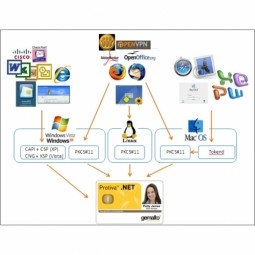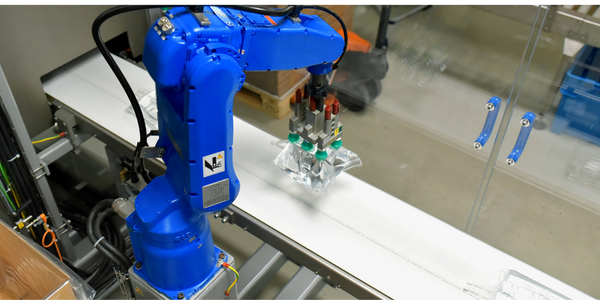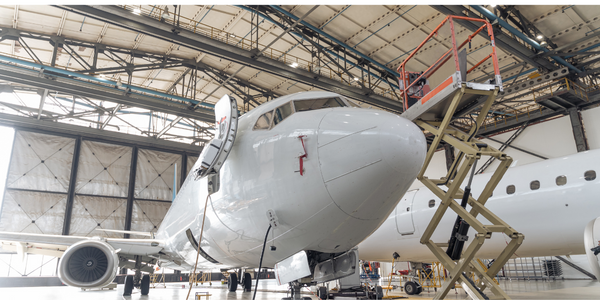技术
- 功能应用 - 计算机化维护管理系统 (CMMS)
- 功能应用 - 企业资产管理系统 (EAM)
适用行业
- 生命科学
适用功能
- 维护
用例
- 资产生命周期管理
- 实时定位系统 (RTLS)
关于客户
该客户是一家正在快速成长的生命科学初创公司。该公司最近扩大了团队规模,在 IT、QA 和设施等各个部门招聘了大量员工。该组织严重依赖手动流程进行资产管理,所有资产信息都记录在电子表格中并存储在多个系统中。他们正在寻求一种更高效、可扩展的解决方案来管理其资产,包括供应商和资产绩效报告、供应商认证和资产跟踪。该公司还正在寻找一种完全基于云的解决方案,以满足 GxP 和 21 CFR Part 11 的要求。
挑战
一家快速发展的生命科学初创公司在资产管理流程方面遇到了困难。该公司最近在各个部门(包括 IT、QA 和设施)聘用了大量员工,并且需要扩展其流程以适应其不断扩大的团队。该组织正在寻求一种改进的方法来处理供应商和资产绩效报告、供应商认证和资产跟踪。现有系统完全是手动的,所有资产信息都记录在电子表格中并存储在多个系统中。这使得快速有效地定位关键信息变得困难。该组织需要更简化的资产管理流程,包括更有效地输入资产名称、铭牌、型号和供应商认证等信息。此外,他们正在寻找完整的基于云的解决方案。
解决方案
在评估了多个集成工作场所管理系统 (IWMS) 和计算机化维护管理系统 (CMMS) 选项后,这家初创公司选择了 Nuvolo Connected Workplace。该解决方案提供了一种统一的、用户友好的方法来连接跨部门的信息和流程。它专为生命科学公司设计,满足 GxP 和 21 CFR Part 11 要求。所有设备和资产记录都保存在一个平台上,使用户能够查看和提取与审计请求相关的任何活动,包括安装、维护和校准、使用和报废。该团队实施了中小型企业 (SMB) 产品,这需要最少的配置和设置。 Nuvolo 托管软件实例,使组织无需担心基础设施或维护成本。中小企业解决方案还提供了未来升级到完整互联工作场所平台的灵活性,包括用于保护运营技术的 OT 安全解决方案和用于资本项目管理的项目解决方案。
运营影响

Case Study missing?
Start adding your own!
Register with your work email and create a new case study profile for your business.
相关案例.

Case Study
Corporate Identity Solution Adds Convenience to Beckman Coulter
Beckman Coulter wanted to implement a single factor solution for physical and remote logical access to corporate network. Bechman Coulter's users were carrying smart card badges for doors, but also needed a one-time password token to access to our corporate network when they were not in the office. They wanted to simplify the process.

Case Study
Embracing Business Success in Real Time
· Increase control over growing Big Data to improve business decisions · Manage data for 28,000 biotechnology stockkeeping units in the fields of microbiology, molecular biology, animal cell cultures, plant tissue cultures, and lab ware for laboratory chemicals · Accelerate report generation and analysis with real-time data

Case Study
Flow Robotics: Scaling Up Production and Accelerating Product Development with IoT
Flow Robotics, a Danish manufacturer, developed flowbot™ ONE pipetting robots to alleviate the strain on bioanalysts in life-science laboratories and hospitals across Europe. These robots were designed to automate part of the testing process, speeding up the time it takes to produce results and reducing pressure on staff. However, the company faced challenges in scaling up production and accelerating product development. High workloads and physically challenging conditions have long been an issue for laboratory professionals. Flow Robotics estimates that around half of medical lab technicians carry out the same arm movements for at least a quarter of their working day. The American Society for Clinical Pathology reported that 85% of laboratory professionals feel burnt out; 36% struggle with inadequate staffing; and 32% face a heavy workload and pressure to complete all testing on time.
Case Study
Material Intelligence at Ethicon: Sustaining Medical Device Manufacturability and Improving Patient Care
Ethicon, a world-class medical devices company, faced several challenges in its operations. The rapid selection of manufacturing materials compliant in global markets was critical to assure patients, practitioners, and purchasing organizations of the biocompatibility of their medical devices. Ensuring supply chain continuity and minimizing risks of obsolescence for medical devices due to regulatory changes were also crucial in meeting Ethicon’s ongoing commitment to maintaining patient care. Furthermore, the engineers at Ethicon were developing the next generation of medical devices and needed to access historical material data to accelerate new product development. The process of centralizing and digitalizing its materials information was a significant challenge that Ethicon needed to overcome.

Case Study
Revolutionizing Aerospace Industry with 3D Printing: A 63% Lighter Titanium Part
GE Aviation, a renowned name in the aerospace industry, recognized the potential of 3D printing technology in transforming the sector. The primary challenge was to reduce the weight of the aerospace parts, which would directly impact the fuel costs. A lighter airplane would mean lower fuel consumption, leading to cost savings and a smaller carbon footprint. However, achieving this weight reduction without compromising the strength and functionality of the parts was a significant challenge. Traditional manufacturing methods were not able to provide the desired weight reduction while maintaining the required stiffness and strength of the parts. The challenge was to find a solution that could create strong, light, and functional aerospace parts.
Case Study
IWT's Transformation: Customizing with Efficiency in IoT
IWT, a company specializing in the design, manufacture, and installation of washing systems for the life sciences and pharmaceutical industries, faced a significant challenge in managing its wide product portfolio. The company manufactures 45 different models, 60% of which are customized to some degree. This high level of customization, combined with limited production quantities, necessitated a controlled process for managing the release of engineering changes. The goal was to achieve efficiency, reduce process time, and better coordinate production throughout the organization. The need for strict compliance in heavily regulated industries further complicated the situation. IWT's existing PLM journey with Dassault Systèmes’ SOLIDWORKS for 3D CAD and Enovia for managing CAD data and Bills of Materials (BOMs) was proving inadequate. The system had limited part classification, no workflow, and no tool to ensure data consistency. The management of non-CAD documents was also a challenge, with information often difficult to find and access.







